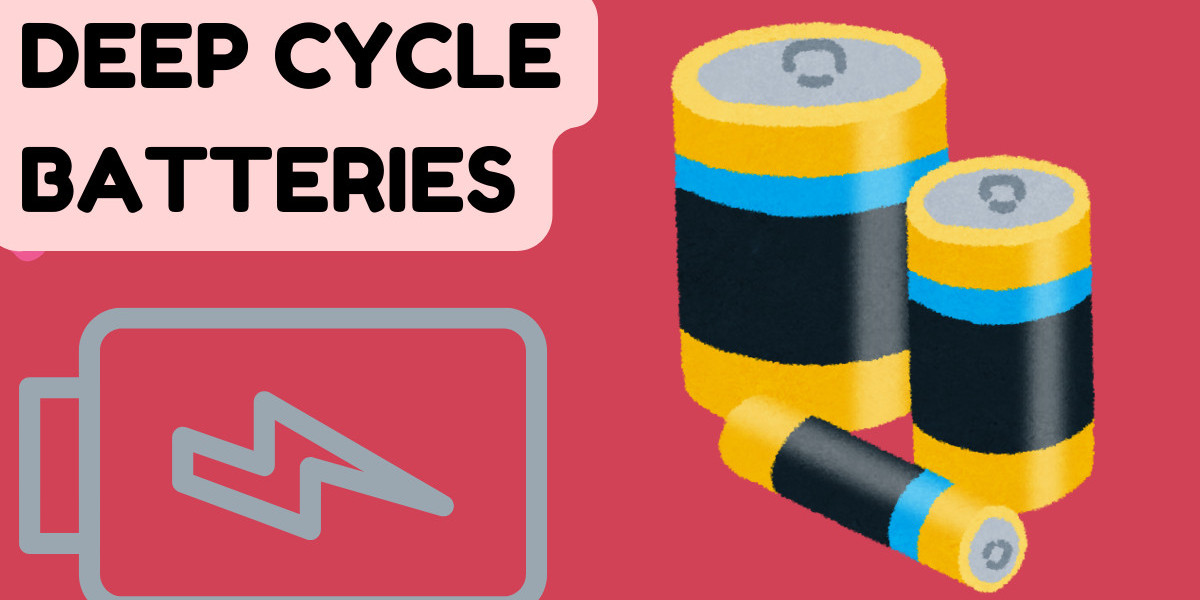Deep cycle batteries are essential components in various applications, from renewable energy systems to marine and recreational vehicles. They differ significantly from regular car batteries, offering unique benefits and specialized functionalities that make them ideal for specific tasks. In this comprehensive guide, we will delve into the intricacies of deep cycle batteries, their types, uses, maintenance, and how to choose the best one for your needs.
What are Deep Cycle Batteries?
Deep cycle batteries are designed to provide a steady amount of current over an extended period. Unlike car batteries, which deliver a short, high-current burst to start an engine, deep cycle batteries are intended to be discharged and recharged repeatedly. This makes them perfect for applications that require a sustained power supply.
Types of Deep Cycle Batteries
There are several types of deep cycle batteries, each with its own advantages and disadvantages:
Flooded Lead-Acid Batteries
Flooded lead-acid batteries are the most traditional and commonly used type. They are affordable and reliable but require regular maintenance, including topping up the electrolyte levels and ensuring proper ventilation to prevent gas buildup.
AGM (Absorbent Glass Mat) Batteries
AGM batteries are a type of sealed lead-acid battery that offers higher efficiency and a longer lifespan than flooded batteries. They are maintenance-free and have a lower self-discharge rate, making them ideal for standby applications.
Gel Batteries
Gel batteries are also sealed and maintenance-free. They use a gel-like substance as the electrolyte, which makes them more resistant to extreme temperatures and vibrations. However, they are typically more expensive than AGM batteries.
Lithium-Ion Batteries
Lithium-ion batteries are the most advanced type of deep cycle batteries. They offer the highest energy density, longest lifespan, and fastest charging times. However, they are also the most expensive option.
Applications of Deep Cycle Batteries
Deep cycle batteries are used in a variety of applications due to their ability to provide sustained power over long periods. Some common uses include:
Renewable Energy Systems
Deep cycle batteries are crucial for solar and wind energy systems. They store the energy generated during the day or when the wind is blowing, allowing it to be used when there is no sunlight or wind.
Marine Applications
Boats and yachts use deep cycle batteries to power onboard electronics, lights, and other equipment. Their ability to withstand deep discharges and vibrations makes them ideal for marine environments.
Recreational Vehicles (RVs)
RVs rely on deep cycle batteries to power appliances, lighting, and other electrical systems when they are not connected to an external power source. These batteries provide the necessary energy for a comfortable off-grid experience.
Backup Power Systems
Deep cycle batteries are used in uninterruptible power supply (UPS) systems and other backup power applications. They ensure that critical systems remain operational during power outages.
Choosing the Right Deep Cycle Battery
Selecting the right deep cycle battery depends on several factors, including the application, budget, and specific requirements. Here are some key considerations:
Capacity
The capacity of a deep cycle battery is measured in amp-hours (Ah). It indicates how much energy the battery can store. Higher capacity batteries can provide power for longer periods, but they are also larger and more expensive.
Lifespan
The lifespan of a battery is an important factor to consider. Lithium-ion batteries typically offer the longest lifespan, followed by AGM and gel batteries. Flooded lead-acid batteries have the shortest lifespan but are the most affordable.
Maintenance
Maintenance requirements vary between different types of deep cycle batteries. Flooded lead-acid batteries require regular maintenance, while AGM, gel, and lithium-ion batteries are maintenance-free.
Cost
Budget is always a crucial factor. While lithium-ion batteries are the most expensive, they offer the best performance and longevity. Flooded lead-acid batteries are the most affordable but may require more frequent replacements.
Maintenance Tips for Deep Cycle Batteries
Proper maintenance can significantly extend the lifespan and performance of deep cycle batteries. Here are some tips to keep them in optimal condition:
Regular Charging
Deep cycle batteries should be regularly charged to prevent deep discharges, which can reduce their lifespan. It is advisable to use a quality charger designed for the specific type of battery.
Avoid Overcharging
Overcharging can damage deep cycle batteries. Use a charger with an automatic shut-off feature to prevent overcharging.
Check Electrolyte Levels
For flooded lead-acid batteries, regularly check and top up the electrolyte levels with distilled water. Ensure the battery is properly ventilated to avoid gas buildup.
Clean Terminals
Keep the battery terminals clean and free of corrosion. Use a mixture of baking soda and water to clean the terminals and prevent corrosion buildup.
Store Properly
If storing deep cycle batteries for an extended period, ensure they are fully charged and stored in a cool, dry place. Periodically check the charge levels and recharge if necessary.
Advancements in Deep Cycle Battery Technology
The technology behind deep cycle batteries continues to evolve, with significant advancements aimed at improving performance, efficiency, and environmental impact. Here are some notable developments:
Enhanced Lithium-Ion Batteries
Lithium-ion battery technology is advancing rapidly, with improvements in energy density, charging speed, and overall efficiency. These advancements make lithium-ion batteries more appealing for a wider range of applications.
Solid-State Batteries
Solid-state batteries are an emerging technology that promises even greater energy density and safety compared to traditional lithium-ion batteries. They use a solid electrolyte instead of a liquid one, reducing the risk of leaks and fires.
Smart Battery Management Systems
Modern deep cycle batteries often come equipped with smart battery management systems (BMS). These systems monitor the battery's health, optimize charging and discharging processes, and provide real-time data to users.
Environmental Impact of Deep Cycle Batteries
The environmental impact of deep cycle batteries is an important consideration. While they are essential for renewable energy systems, their production, use, and disposal can have significant environmental implications.
Recycling
Recycling deep cycle batteries is crucial to minimize their environmental impact. Lead-acid batteries are highly recyclable, with most of their components being reusable. Lithium-ion batteries are more challenging to recycle, but efforts are being made to improve recycling processes.
Eco-Friendly Alternatives
Research is ongoing to develop more eco-friendly alternatives to traditional deep cycle batteries. These alternatives aim to reduce the reliance on toxic materials and improve the overall sustainability of energy storage solutions.
Conclusion
Deep cycle batteries play a vital role in numerous applications, providing reliable and sustained power. Understanding the different types, applications, and maintenance requirements can help you choose the best deep cycle battery for your needs. As technology continues to advance, the performance and environmental impact of these batteries are expected to improve, making them an even more integral part of our energy landscape.



